Guest Post by Aivaras Jefanovas.
This is my third and final #ResearchforChange fieldwork diary entry about how I have been applying MAXQDA in my Ph.D. research on human-animal relationships in a small Eveny community of reindeer herders/hunters in the Northern Yakutia. It will reflect back on and add to the experiences I wrote about in my previous articles.
Final review of the application of MAXQDA for my Ph.D. project “Investigating The Reindeer Herders Of Northern Yakutia”
My investigation strategy was to nomadize together with the reindeer herders by only temporarily staying in the village and moving with them when they went back to the Taiga where their reindeer herds were sustained. My fieldwork investigation was based on ethnographic research methods such as:
- participant observation,
- informal interviews,
- oral history recording, and
- visual methods, such as photo ethnography.
The first obstacle I faced at the beginning of my fieldwork was the lack of opportunities to write down all my interviews and observational data on my PC. I soon realized that the options for charging my battery in the field were very limited, so hand-written notes and audio recordings suited my fieldwork data collection methods better because I record notes much more quickly that way. Besides, it was much easier to carry notes or a Dictaphone in my pocket and write down observations while “on the move”. Moreover, my interlocutors seemed to get used to these observation techniques more quickly, hence they haven’t disturbed the natural flow of people’s daily routines.
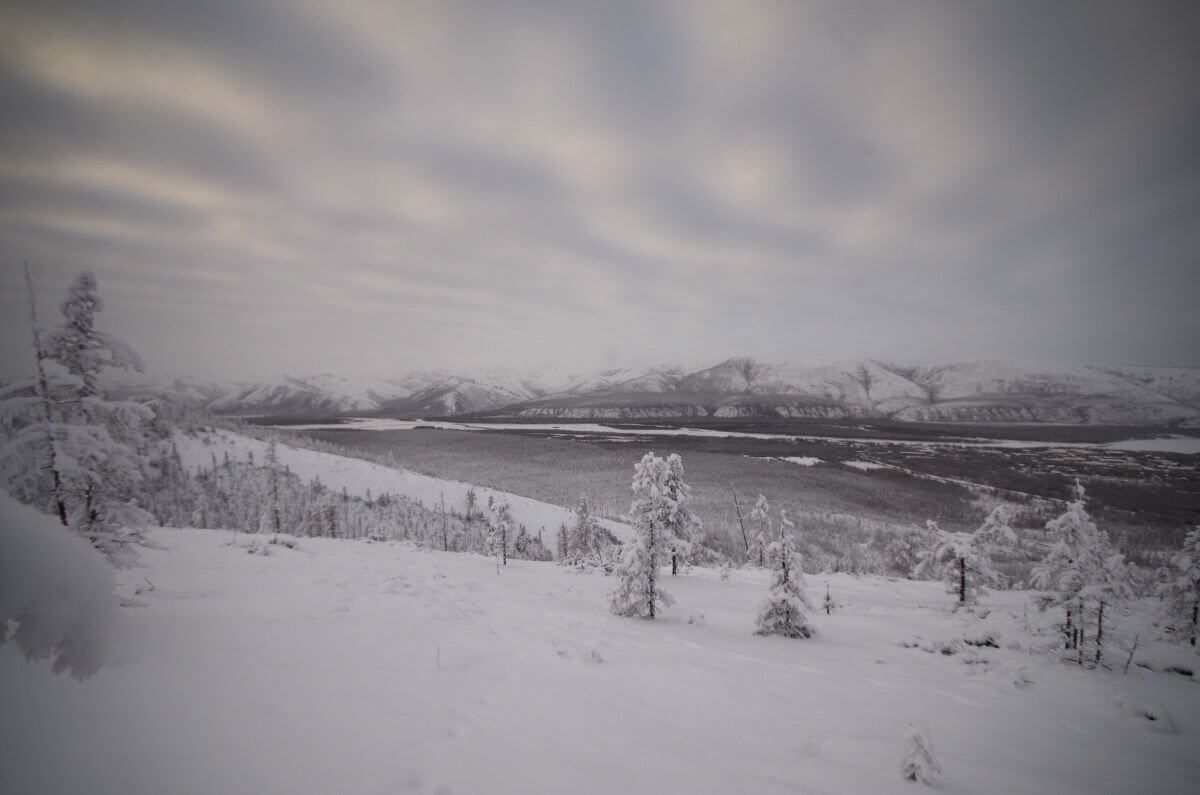
The arctic landscape of the Northern Yakutia, photographed by the author in October 2019
I shall add here that weather conditions in the arctic, to put it mildly, are cold and harsh. In wintertime temperatures may drop to -50 C below zero and even at the beginning of March, temperatures still frequently dropped to -30 C during the day and -40 C at night. The application of digital software for the data collection in these cold conditions was impossible.
As a result, after my fieldwork, I had enormous amounts of different kinds of ethnographic data, e.g. handwritten texts in my native Lithuanian language, as well as in Russian and Yakutian (local expressions) languages, many pictures, and hours of recordings. Additionally, I gathered a stack of archival materials. Then I faced the question of how to retype and transcribe all of these? I realized it would take far too much time.
Data Analysis with MAXQDA
Fortunately, MAXQDA was perfect aid for this qualitative research, as it enabled me to organize all kinds of data e.g. by scanning handwritten notes and coding them, coding pictures, applying MAXQDA’s Transcription Mode for records, and also using creative coding, memos, and retrieving specific segments of the information I needed.
Next, I will show you in a step-by-step manner which of MAXQDA’s tools I have been utilizing to organize and analyze specific types of writing, such as narratives and notes of my experiences.
Uploading all my data
The most logical and time-saving function I found in MAXQDA was its great option for importing and coding scanned documents. These functions enabled me to import my handwritten field notes, escaping the tedium of endless retyping. Moreover, in the same way, I was able to upload and code archival data, and useful sections from articles and books, which I have combined with my field data to provide a theoretical background to my ideas.
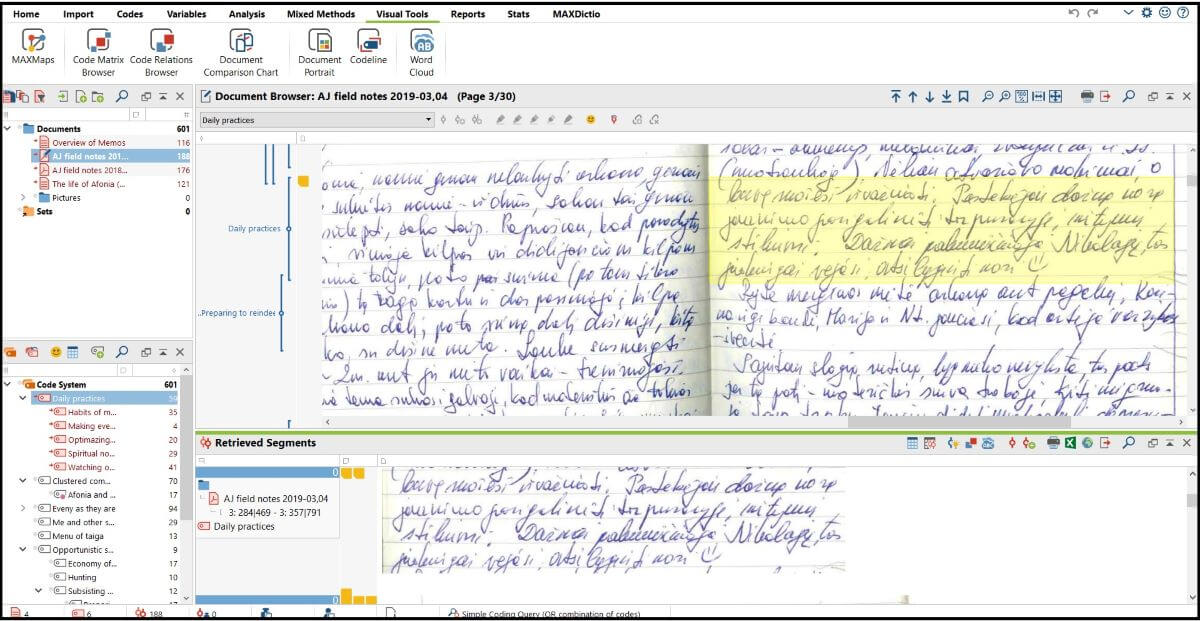
Loading and coding scanned field notes and saving time for further analysis
Some more great options I enjoyed were the coding and analysis functions for images. As I have already described in my previous articles, the photograph coding method I used helped me discover unexpected information, triggered my memory, and helped reconstruct very subtle details from my fieldwork. Thus, the accurate analysis of this ethnographic data revealed the Siberian indigenous life to me, full of all its mysteries and unexpected discoveries.
For instance, I took a photo of a dead woodpecker up on a tree after it had been shot by the reindeer herder. When I zoomed in, I was surprised to see that the woodpecker’s feathers had been put in its beak. This observation raised new questions about Yakutian herders’ traditions and I asked my interlocutor to explain it, generating new data for my study. Thus the images sometimes speak for themselves.
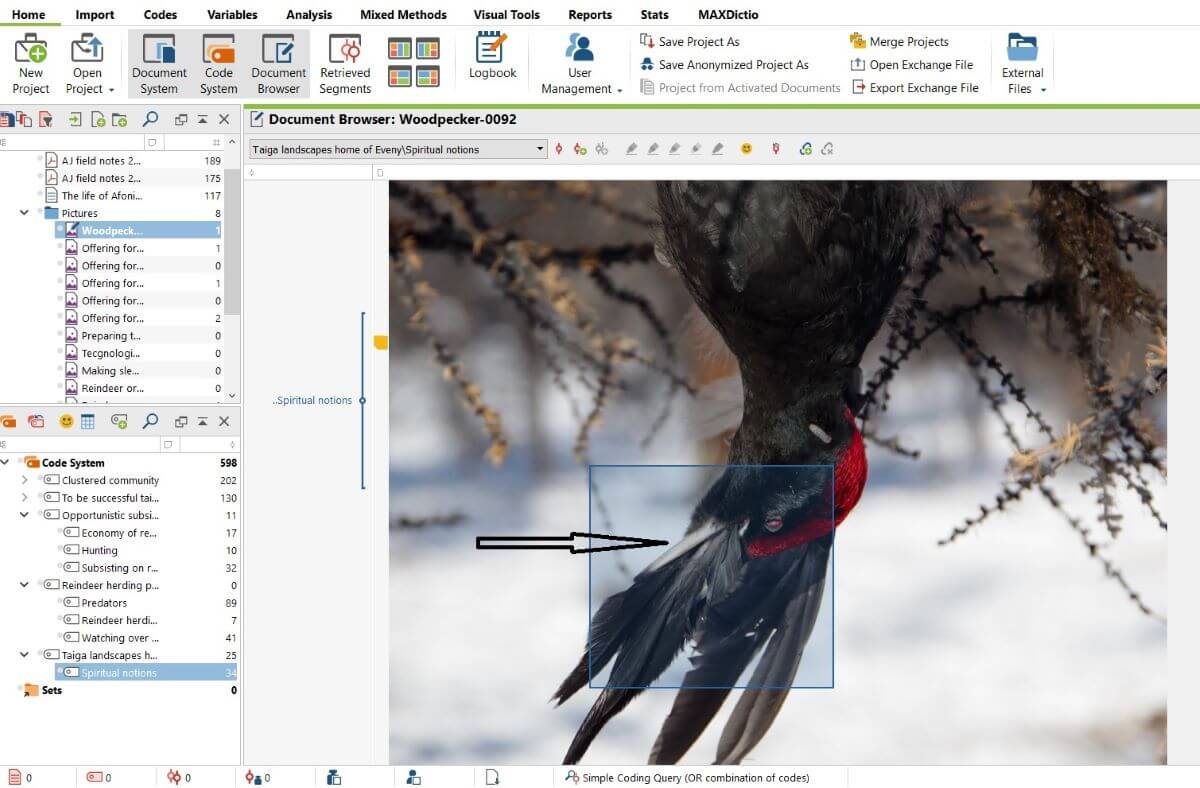
Zooming in on pictures while coding images with MAXQDA
Transcribing voices from the field
Another very important tool that deserves to be mentioned is MAXQDA’s Transcription Mode. I found it very convenient to transcribe the audio interviews and oral histories I had been told by my Yakutian interlocutors. It made the transcription process faster because I could immediately code newly-typed texts as I transcribed.
Moreover, MAXQDA allowed me to quickly jump to certain points in the audio file I was working without losing the connection with the text, because the transcript and the recording are linked to each other. I could thereby conduct in-depth analyses by repeatedly coming back to the episodes of important accounts.
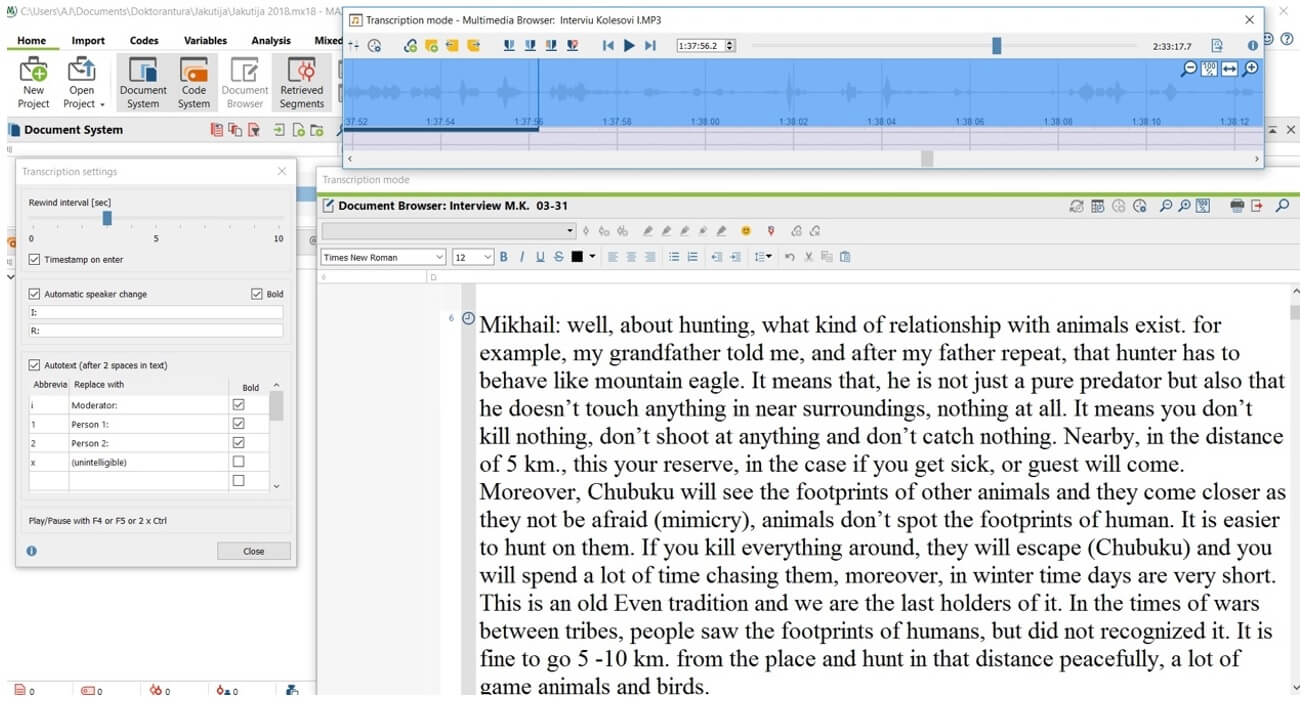
Transcribing interviews with MAXQDA’s Transcription Mode
Hence, there’s no doubt this convenient tool has played an important role in my field data organization, as one-third of my field data consists of interviews and orally-related records that had to be typed on “paper”. Next, let’s move on to the coding of my data and generating my Ph.D. thesis.
Coding – optimizing, rethinking – coding
After the initial organization of my fieldwork data, the time for accurately coding and categorizing my ethnographic data had come. To do so, I applied MAXQDA’s visual tool MAXMaps, the Code Relations Browser, and Creative Coding.
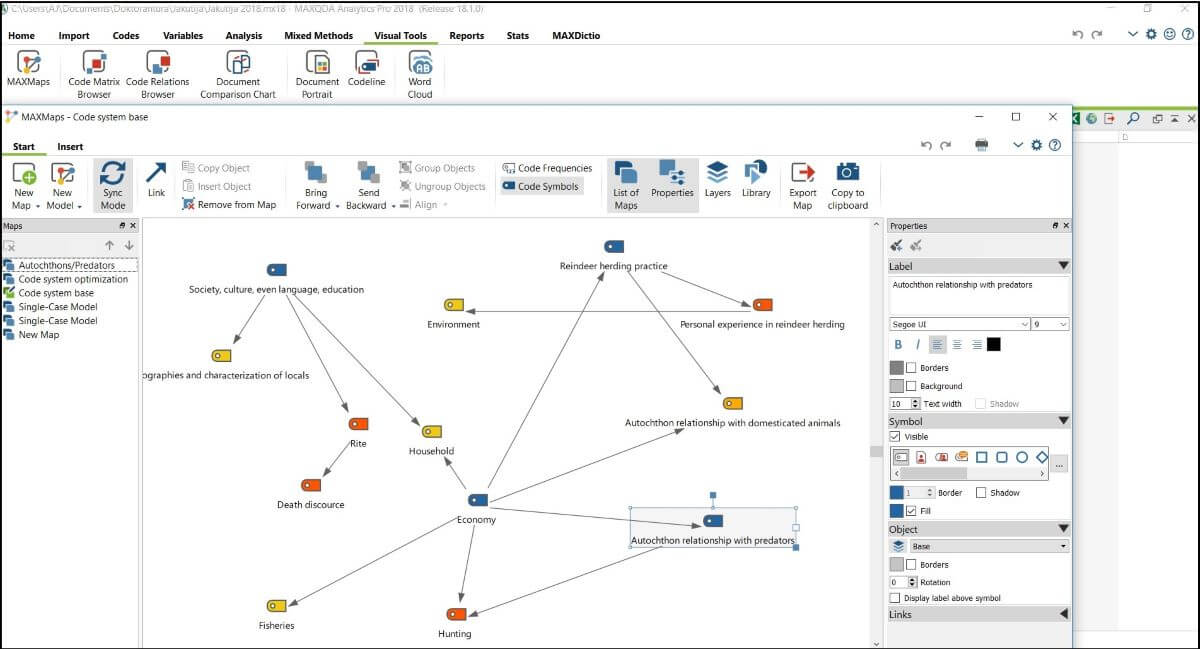
Optimizing the code system with MAXMaps
1. First, I used MAXQDA’s MAXMaps feature to visualize the relationships between different codes (see screenshot above). It was especially useful in the initial stage when I had a few ideas about how to start organizing a code system. I arranged all the codes and linked the related ones in MAXMaps.
2. Then, I distinguished between the core categories and what I called the ‘side’ categories to set aside and analyze later. Hence, I found more core themes that have expanded my categories and also merged some related categories and shortened my code list.
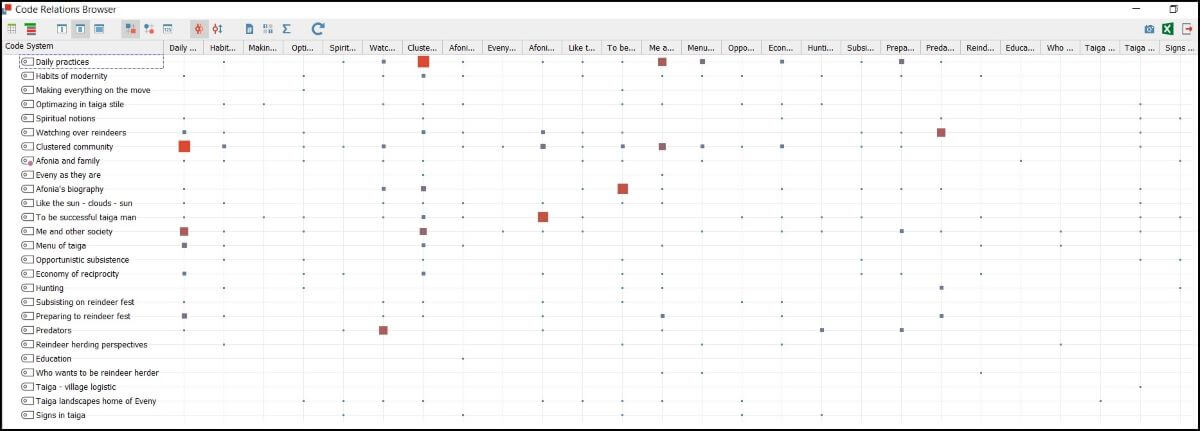
Visualization of overlapping codes with the Code Relations Browser allowed for reconsidering my ideas in-depth
3. Next, I applied MAXQDA’s Code Relations Browser, which allowed me to consider the number of co-occurrences of codes (see screenshot above). Moreover, I was able to examine which two codes were present at a defined distance from one another with the Near (codes) function. Thus, a review of the overlapping codes enabled me to analyze which of my ideas occurred repeatedly – and that helped to decide which categories could be merged to shorten my code system.
4. And finally, the Creative Coding tool helped me improve the whole code system (see screenshot below). I would say the most convenient thing about this the tool is that all changes you make in the Creative Coding workspace (e.g. change hierarchical order) are automatically reflected in the code system as well. So there’s no need to worry about re-coding all the data when reorganizing the code system, as it will be automatically transferred.
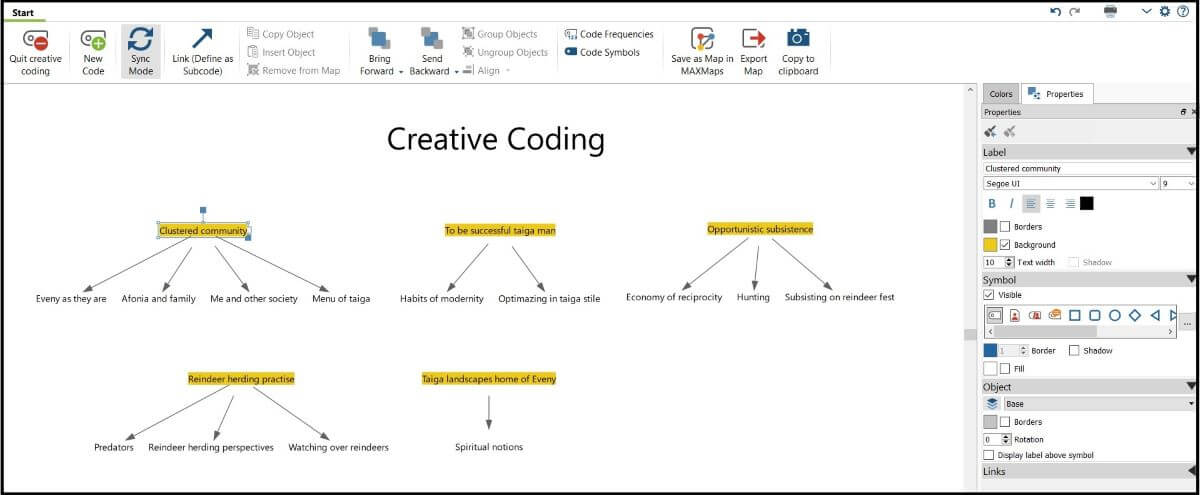
Creative coding improved my code system by congregating relative themes and generate new ones
But one more very important tool that has to be mentioned is the memo-writing options. While I was coding all kinds of data, I could also write the memos at the same time. Then I exported these and recoded them over several “rounds” to achieve the best insights into my data.
This technique helped jog my memory, which resulted in additional information and new ideas. However, the result has been more than an ordered system of my field data. The whole memo-writing process evoked ideas, themes, and finally the headings of the chapters of my dissertation. In other words, this process provided me with the base structure of my dissertation.
Closing remarks: Meeting The Eyes Of Wolves In The Taiga
In this last field diary entry, I would like to share an extract of an episode in my dissertation chapter that accounts for human – predator relationships in the sense of cohabitation in shared landscapes. I will also give my interpretation based on my experiences.
Below I am giving an account of the “intelligence” of wolves. It is an authentic memory of a local 62-year-old Eveny woman living in Northern Yakutia. She remembered a childhood event when she was watching over the reindeer herd of her parents when she encountered a pack of wolves, who seem to try to explore the girl’s character for strength and resistance.
“My grandmother taught me that predators are creatures of God and should be respected. It is not good to speak badly about wolves; it is better not to talk about them at all. In those times, however, wolves were abundant in Yakutia, but not so aggressive as in our times. Wolves used to howl in surroundings of a reindeer encampment, so we children sometimes scared them by beating loudly into the griddle. Also, children were given a flare-gun to scare the wolves by shooting lights into the sky. It was great, as it looked like the colorful fireworks.
Once, after guarding the reindeer at night, myself and a female cousin of mine were coming back to the encampment when suddenly I heard a rumble coming from the reindeer hooves. I jumped on my saddled reindeer “Uchach” and rode to find out what the reindeer were running from while my cousin stayed behind. I saw two grey creatures lurking around, and when I realized it was a couple of wolves I became numb with fear. The wolves approached me and sat nearby, attentively staring at me. I was so scared I was frozen to the spot. Those eyes were so frightening, the teeth, the wolves were growling at me. Meanwhile, the reindeer herd fled forward, while I was left in place with my “Uchach”.
I stood with the riding stick (it is used for keeping balance on reindeer) and thought that if I ran, the wolves would attack, if I approached them, they would attack me too, so I couldn’t decide. Eventually, I lifted the stick and started approaching them, shouting, hitting the ground, and making more noise by stomping my feet. I don’t know how I did it but the wolves were sat there for a while, probably thinking “what a foolish girl”.
Then the wolves slightly stepped back and I felt more self-confident. I thought, “yes, I am a human and you wolves are afraid of me.” Hence, the predators backed up, sat, and gazed for a time, then again, they walked to the side and sat down to observe what I was doing from the distance. Eventually, the wolves ran over the hill and disappeared into the valley beneath. Luckily, that time the predators didn’t touch any reindeer at all.”
Wolf footprints on the river bank. Photo taken by the author, 2018
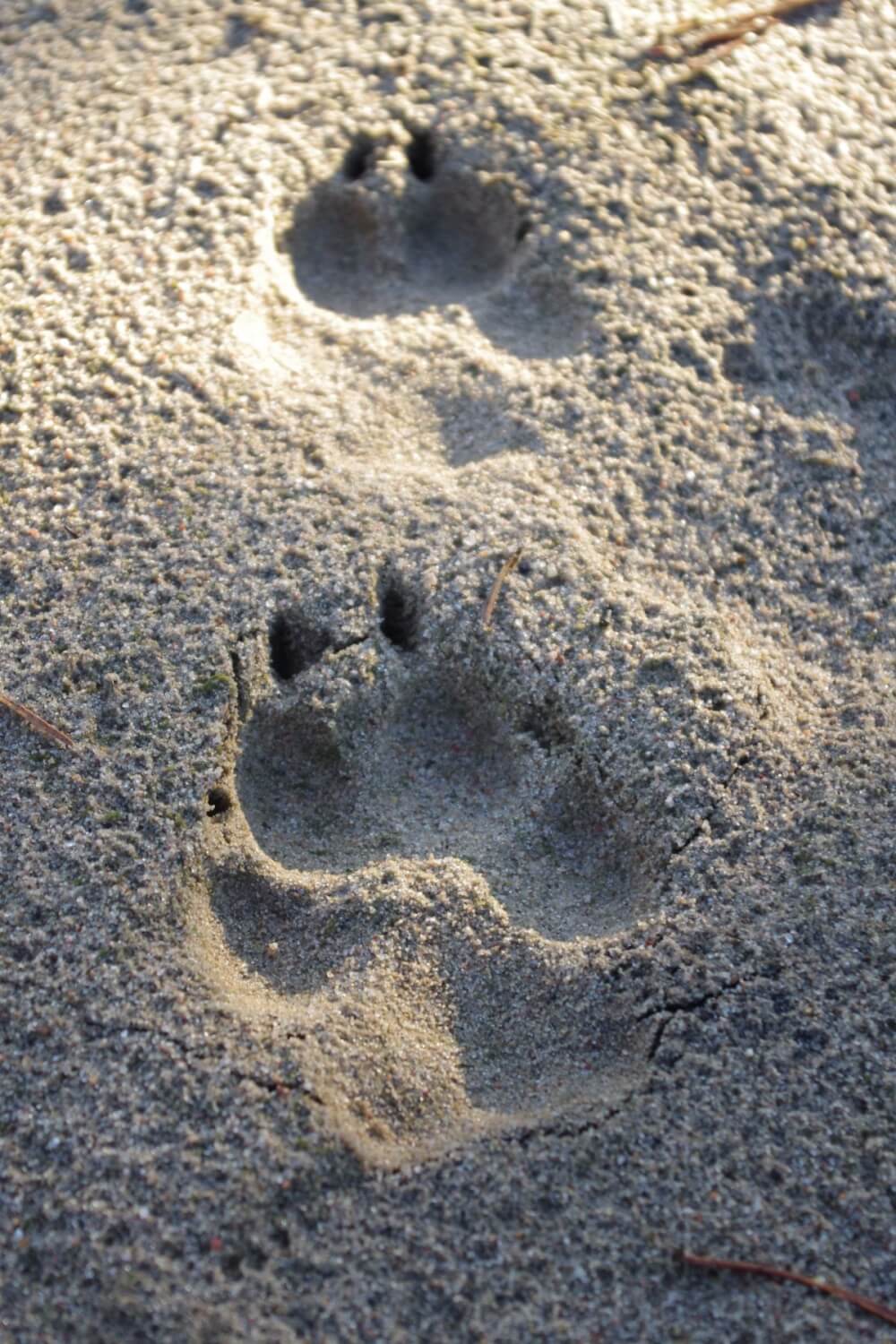
There is something familiar to me in this story of human – predator relations. Once during the fieldwork, I experienced the imminent closeness of the bear, the so-called master of the Taiga. At that moment I could not get rid of the feeling that the places I had become familiar with now appeared alien and dangerous. It seemed like the Taiga had eyes and it was watching me. I could feel the presence of another being nearby (see: Jefanovas 2019 et. al. “Multispecies Households in the Saian Mountains”).
In other words, it is a sense of observing and being observed by the other creature. This feeling leads to the perception of living among the other worlds of other beings than we are, that is the predator beings who communicate with us, watching us, apprehend our actions, and sometimes pose a threat to our wellbeing and us. Such a notion based on my personal experiences throughout my fieldwork might be paralleled with that of local people, and eventually, it allows for the ethnographer to better understand the life of the nomadic people he investigates.
With these accounts, I attempted to show how at the end of the huge process of collection of ethnographic data in the field, organizing and ordering it, engaging in an in-depth analysis, empathy and experience-based ideas finally emerged. I have enjoyed working with MAXQDA as it assisted me on this long journey of assembling and analyzing the vast and puzzling field data. It also has helped me in the creative process and, most importantly, generated new ideas in my research, which I have succeeded in.
About the Author
Aivaras Jefanovas is a recipient of the 2018 #ResearchforChange Grant. He is a PhD student in Ethnology at Vilnius University Institute Of Asian And Transcultural Studies. His research project titled “Investigation of sociocultural relationships between humans and animals among Siberian reindeer herders and hunters” began in March 2018. Read his previous fieldwork diary entries to learn more about his amazing research in the Arctic:

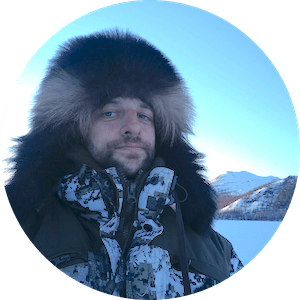 Aivaras Jefanovas is a recipient of the 2018 #ResearchforChange Grant. He is a PhD student in Ethnology at Vilnius University Institute Of Asian And Transcultural Studies. His research project titled “Investigation of sociocultural relationships between humans and animals among Siberian reindeer herders and hunters” began in March 2018. Read his previous fieldwork diary entries to learn more about his amazing research in the Arctic:
Aivaras Jefanovas is a recipient of the 2018 #ResearchforChange Grant. He is a PhD student in Ethnology at Vilnius University Institute Of Asian And Transcultural Studies. His research project titled “Investigation of sociocultural relationships between humans and animals among Siberian reindeer herders and hunters” began in March 2018. Read his previous fieldwork diary entries to learn more about his amazing research in the Arctic:


